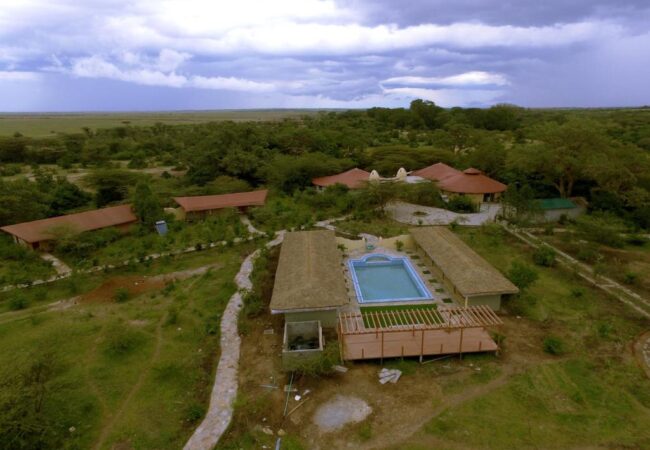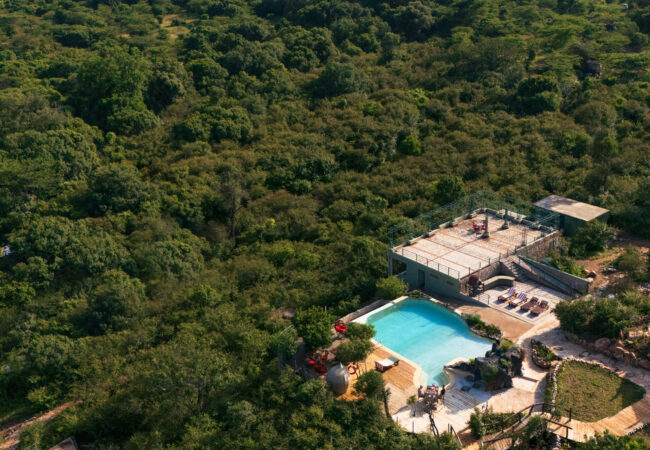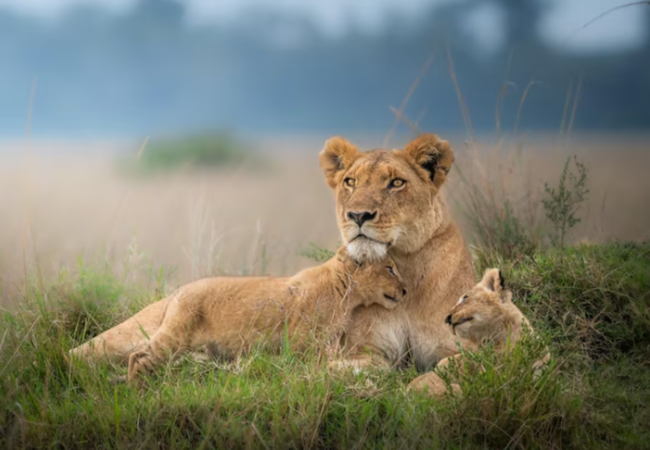Nestled in the northwestern part of Rwanda, Gishwati Mukura National Park is a serene and lesser-known sanctuary renowned for its lush rainforests, rich biodiversity, and tranquil landscapes. Covering an area of approximately 34,000 hectares, the park is a recent addition to Rwanda’s network of protected areas, having been officially designated in 2016. As a hidden gem, Gishwati Mukura offers visitors a unique opportunity to explore pristine rainforests and engage with a variety of wildlife in a relatively undiscovered corner of the country.
Scenic Beauty and Natural Attractions
Gishwati Mukura National Park is characterized by its dense rainforests, rolling hills, and high-altitude wetlands. The park’s diverse landscapes provide a picturesque backdrop for wildlife observation and nature-based activities.
- Rainforest Ecosystems: The park is home to rich rainforest ecosystems that harbor a wealth of plant and animal species. The lush vegetation and towering trees create an enchanting environment that is perfect for exploration and wildlife spotting.
- Rolling Hills and Wetlands: Gishwati Mukura’s terrain includes rolling hills and high-altitude wetlands, offering beautiful vistas and varied habitats. The wetlands are essential for maintaining the park’s ecological balance and supporting diverse wildlife.
Wildlife and Bird Watching
Gishwati Mukura National Park is a haven for wildlife enthusiasts and birdwatchers, with a variety of species thriving in its diverse habitats:
- Primate Species: The park is home to several primate species, including the endangered eastern chimpanzees. These fascinating primates can be observed in their natural habitat, providing a unique wildlife experience. The park also supports populations of golden monkeys and various colobus monkeys.
- Bird Watching: With over 200 bird species recorded, Gishwati Mukura is an excellent destination for birdwatching. Notable species include the elusive Grauer’s swamp warbler, the Rwenzori turaco, and the vibrant yellow-eyed blackflycatcher. The park’s varied habitats offer excellent birdwatching opportunities.
- Other Wildlife: In addition to primates and birds, the park is home to a variety of other wildlife, including forest elephants, duikers, and bushbucks. While less frequently seen, these animals contribute to the park’s rich biodiversity.
Activities and Adventures
Gishwati Mukura National Park offers a range of activities that allow visitors to immerse themselves in its natural beauty and engage with its wildlife:
- Chimpanzee Tracking: One of the park’s premier activities is chimpanzee tracking. Guided treks through the rainforest provide an opportunity to observe these intelligent primates in their natural environment. The experience includes learning about their behavior, social structures, and conservation efforts.
- Nature Walks and Hikes: Explore the park’s lush landscapes on guided nature walks and hikes. Discover the park’s flora and fauna, learn about its ecological significance, and enjoy the tranquility of the rainforest. Trails vary in difficulty, catering to different fitness levels and interests.
- Bird Watching: For avid birdwatchers, Gishwati Mukura offers a chance to spot a variety of bird species in their natural habitat. Guided birdwatching tours enhance the experience by providing insights into bird behavior and habitat.
Conservation and Community Impact
Gishwati Mukura National Park is dedicated to preserving its unique ecosystems and supporting local communities through sustainable practices:
- Conservation Efforts: The park’s management focuses on protecting its rainforest habitats and wildlife through anti-poaching initiatives, habitat restoration, and community engagement. Conservation efforts aim to ensure the long-term health of the park’s natural resources.
- Community Engagement: Tourism supports local communities by providing jobs and contributing to development projects. The park collaborates with neighboring communities to promote sustainable livelihoods and conservation efforts, enhancing the overall impact of tourism.
Accommodation and Dining
Gishwati Mukura National Park offers a range of accommodation options to suit different preferences and budgets:
- Lodges and Camps: The park features several lodges and campsites, providing comfort and convenience while allowing you to fully enjoy the park’s natural beauty. Accommodations are designed to blend seamlessly with the environment and offer easy access to the park’s attractions.
- Dining: Enjoy meals at the lodges and camps, where you can savor delicious local and international cuisine. Dining options provide views of the park’s lush landscapes, enhancing your overall experience.
Planning Your Visit
A trip to Gishwati Mukura National Park offers a unique and peaceful adventure. Here’s how to plan your visit:
- Best Time to Visit: The park can be visited year-round, but the dry seasons from June to September and December to February offer more favorable weather conditions for outdoor activities. These months typically provide clearer trails and better wildlife viewing opportunities.
- Travel Requirements: Ensure you have the necessary permits for park activities and check for any health requirements or vaccinations before your trip. It’s advisable to book accommodations and activities in advance, especially during peak tourist seasons.
- What to Bring: Pack lightweight, moisture-wicking clothing, sturdy hiking boots, and rain gear for outdoor activities. Don’t forget binoculars for wildlife and bird watching, a camera with a good zoom lens, and insect repellent.
Gishwati Mukura National Park is a serene and enchanting destination that offers a unique opportunity to explore pristine rainforests, observe diverse wildlife, and engage in immersive outdoor activities. Whether you’re tracking chimpanzees, hiking through lush landscapes, or birdwatching in the rainforest, Gishwati Mukura provides an enriching and tranquil experience. Plan your visit today and discover the natural beauty and tranquility of Rwanda’s hidden rainforest retreat.












